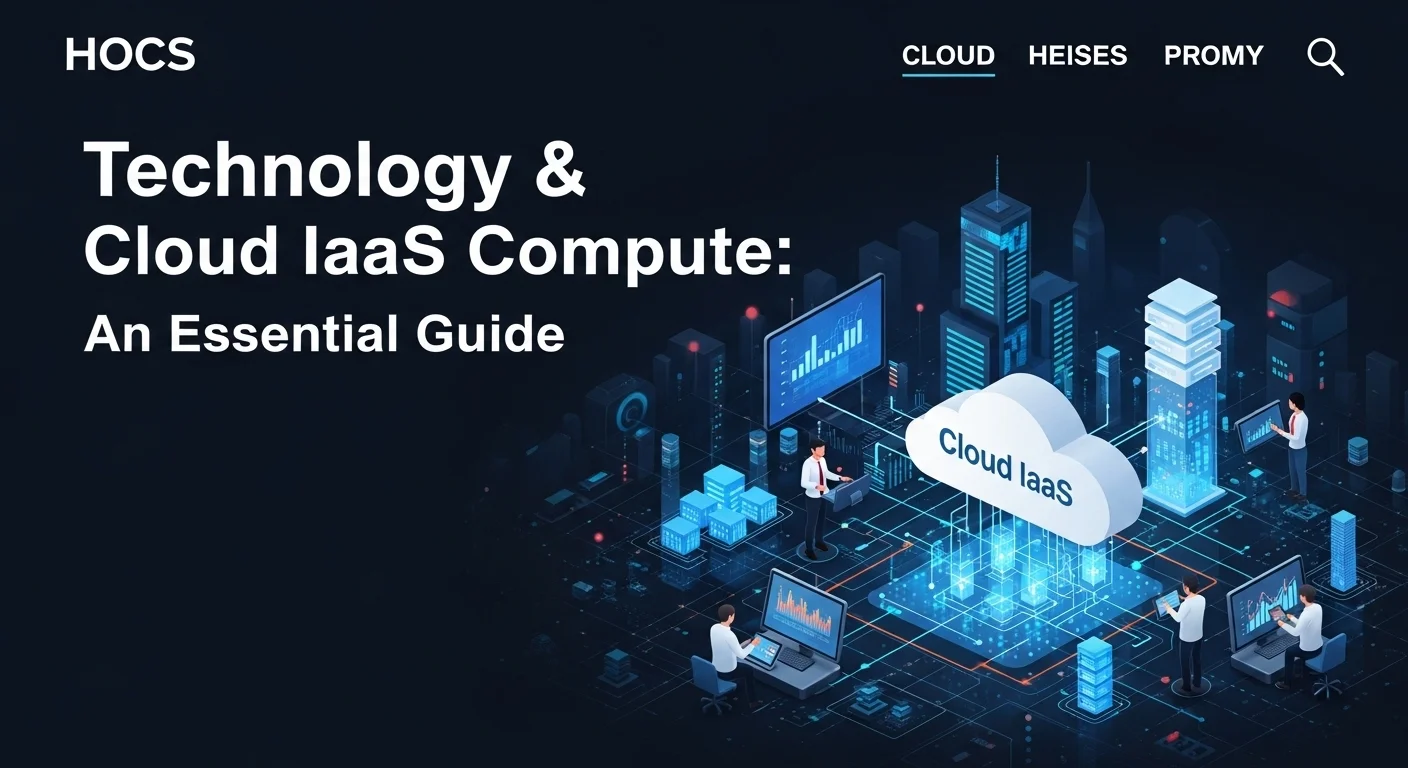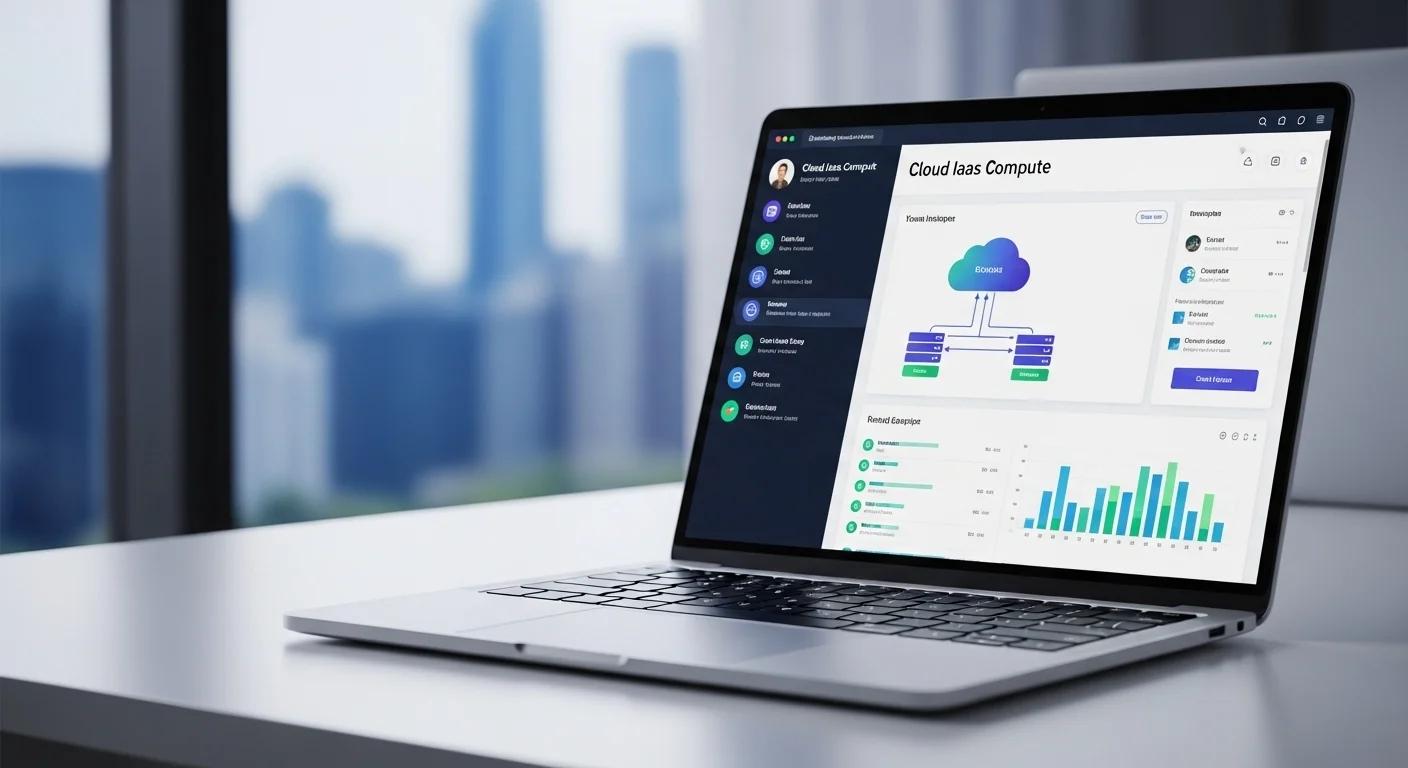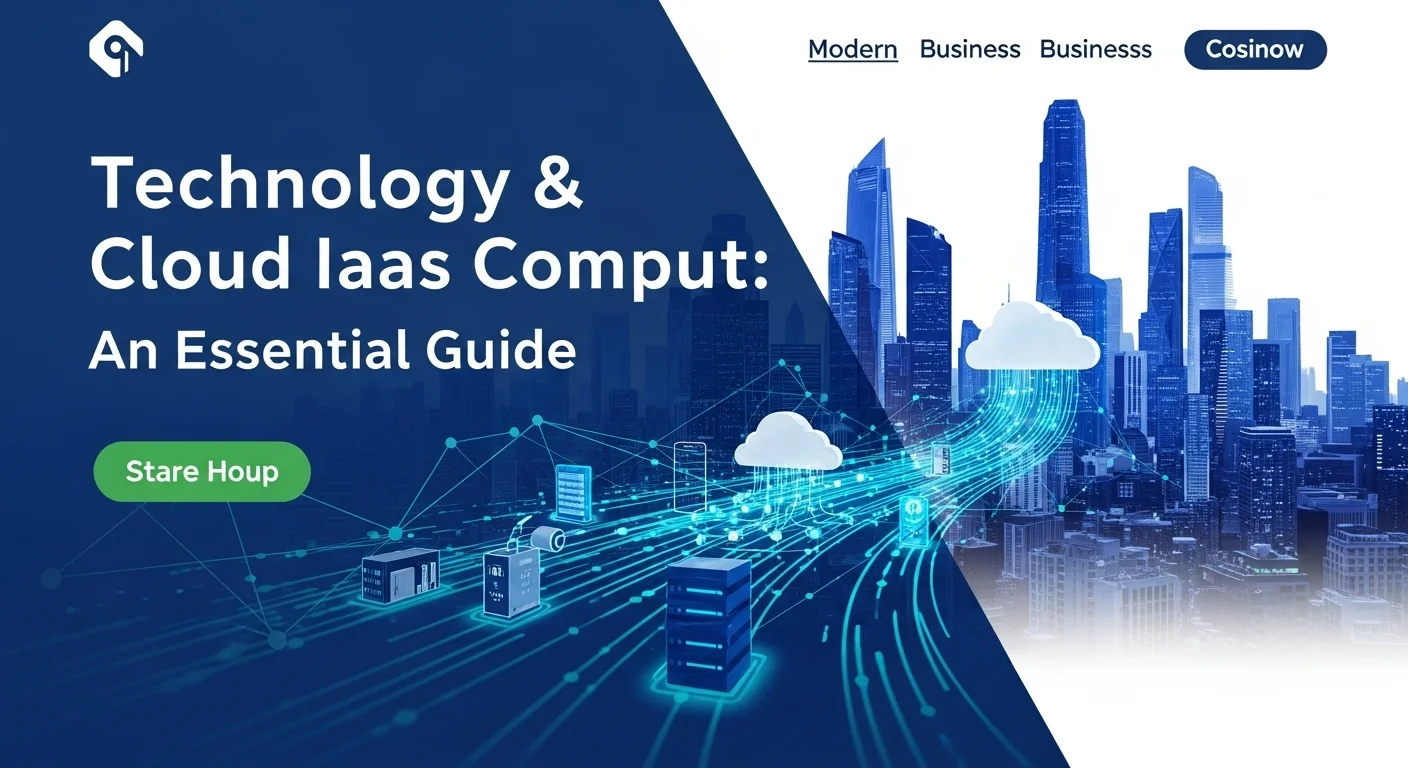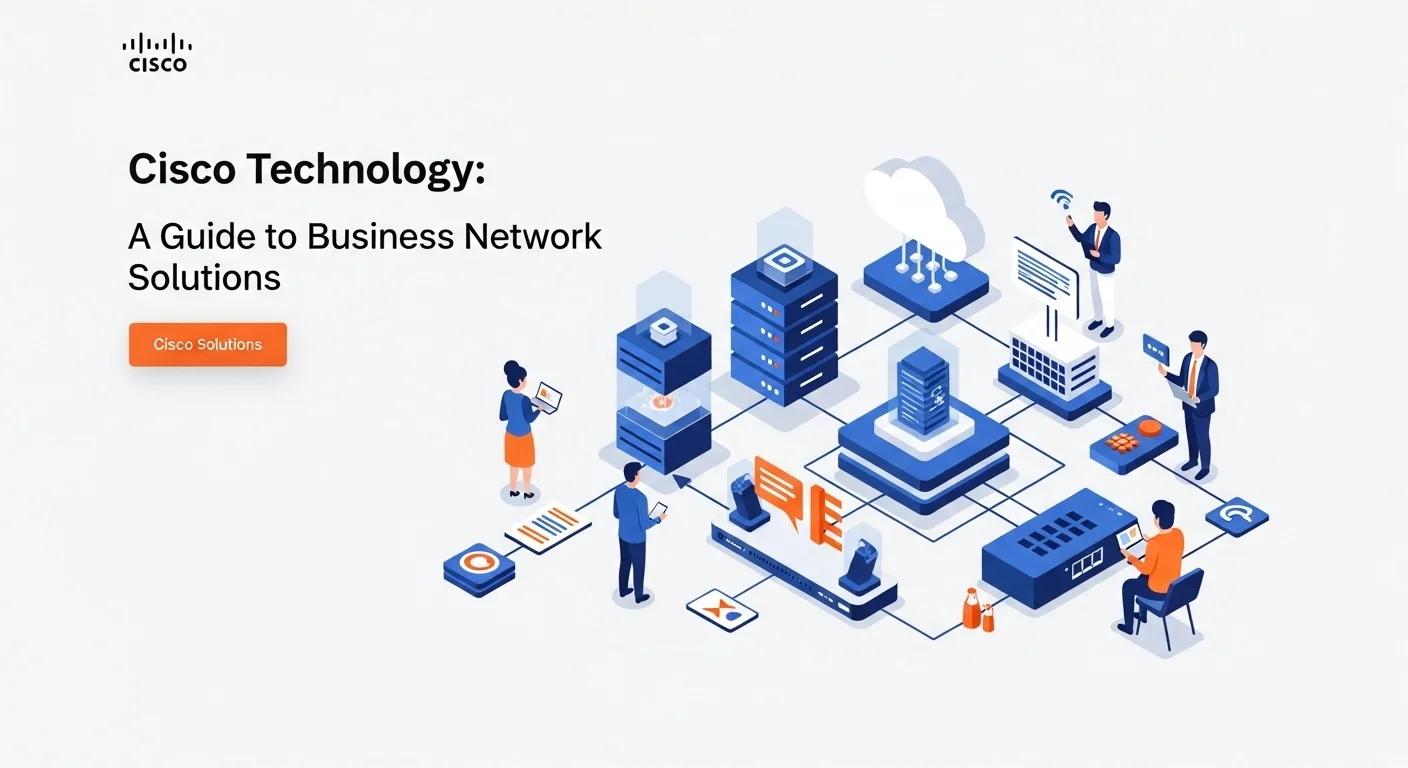IaaS Explained: A Personal Guide to Cloud Infrastructure

Executive Summary
This article is my personal take on Infrastructure as a Service (IaaS), a cornerstone of cloud computing that has completely changed the game. I'll walk you through what IaaS really is, cutting through the jargon. We'll look at the foundational architecture—how virtual servers, storage, and networks are delivered to you on-demand. I've seen firsthand how IaaS helps businesses, from simple web hosting to complex big data projects. We'll explore its biggest benefits, like saving money, scaling with ease, and being incredibly flexible. Think of this as your friendly, essential guide to understanding how IaaS empowers companies to innovate faster, work smarter, and get ahead in this digital age.
Table of Contents
Table of Contents
What Exactly is IaaS, in Simple Terms?
In my years working in tech, I've seen countless buzzwords come and go. But cloud computing, and specifically Infrastructure as a Service (IaaS), has stuck around for one simple reason: it works. People often search for terms like 'Cloud Iaas Comput,' but what they're looking for is a way to understand this fundamental shift in how we build things online. At its heart, IaaS is like renting a powerful, flexible, and fully-equipped workshop instead of building your own from the ground up. A cloud provider, like Amazon Web Services (AWS), Microsoft Azure, or Google Cloud, manages the physical building (data centers), the heavy machinery (servers), and the wiring (networking). You simply access it over the internet and pay for what you use. This simple idea gets rid of massive upfront costs and the headache of maintenance, letting you focus on what you actually want to build.
The Old Way vs. The IaaS Way
To really get why IaaS is so important, let me paint a picture of the 'before' times. If you wanted to launch a new app, you had to buy physical servers, find a place to store them, set up cooling and power, install software, and configure complex networks. It was a slow, expensive process that could take months. I remember working with an e-commerce client who had to buy enough servers to survive the Black Friday rush, even though those machines sat mostly idle for 11 months of the year. It was incredibly inefficient. IaaS flips that script entirely. With a few clicks in a web portal, that same company can now provision the computing power they need in minutes. This is all possible thanks to virtualization. Cloud providers use a technology called a hypervisor to slice up a single physical server into multiple, secure virtual machines (VMs). These resources are pooled together, and you can scale your usage up or down instantly. This elasticity is the magic of IaaS—you only pay for what you truly need, when you need it.
A Look Under the Hood: How IaaS Architecture Works
The reliability of IaaS comes from its clever, layered architecture. Understanding these layers helps you appreciate the power you're harnessing.
1. The Foundation (Physical Layer): This is the concrete and steel of the cloud. It's the global network of data centers filled with server racks, storage systems, and networking gear. These facilities are built with incredible redundancy—backup power, advanced cooling, and tight security. The cloud provider handles all of this, so you don't have to.
2. The Magic (Virtualization Layer): This is where the abstraction happens. The hypervisor software sits on top of the physical hardware, allowing the creation of isolated virtual machines. This is what enables multiple customers to share the same physical infrastructure securely and efficiently, a concept we call 'multitenancy'.
3. The Controls (Management Layer): This is your command center. It's the web dashboard and APIs you use to manage your virtual world. You can launch new VMs, configure networks, attach storage, and monitor everything without ever touching a physical cable. This self-service control is a defining feature of IaaS, giving you the power of a full data center at your fingertips.
The Real-World Business Benefits of IaaS
Adopting IaaS is a strategic move that delivers tangible results. I've seen it transform businesses time and again.
- Smarter Spending: IaaS changes IT costs from a huge upfront capital expense (CapEx) to a predictable operational expense (OpEx). Instead of buying hardware, you pay a monthly bill based on your usage, dramatically lowering the total cost of ownership.
- Incredible Scalability: Your business is no longer boxed in by physical hardware. You can scale up for a big launch and scale back down during quiet periods, ensuring perfect performance without wasting money.
- Move Faster: The ability to get infrastructure ready in minutes, not months, fuels innovation. I've helped teams shorten their development cycles and get new products to market faster, giving them a huge competitive edge.
- Focus on What Matters: By letting the cloud provider manage the infrastructure, your team can stop 'keeping the lights on' and start working on projects that actually grow the business.
- Bulletproof Your Operations: IaaS providers offer disaster recovery options that are far cheaper and easier to manage than building your own backup data center. You can easily replicate your systems to another region to ensure you stay online, no matter what happens.
Everyday Applications of IaaS
The beauty of IaaS is its versatility. It's a foundational tool for all sorts of projects.
- Hosting Websites and Apps: It's the perfect platform for hosting applications, scaling effortlessly from a small blog to a viral sensation.
- Development and Testing: Developers love IaaS. They can spin up temporary environments to test new ideas and tear them down when they're done, making the whole process faster and cheaper.
- Data Storage, Backup, and Recovery: IaaS offers affordable and incredibly durable storage, making it ideal for backing up critical data and creating simple, effective disaster recovery plans.
- High-Performance Computing (HPC): For complex tasks like scientific modeling or financial analysis, IaaS gives you on-demand access to supercomputer-level power without the supercomputer price tag.
- Big Data Analytics: IaaS provides the raw storage and compute power needed to analyze massive datasets, helping businesses uncover valuable insights.
In short, IaaS is more than just a technology; it's a new way of operating. It has become an essential engine for any modern business looking to innovate and grow. Understanding how it works is the first step to harnessing its incredible power.

The Complete Playbook for IaaS in Your Business
Going beyond the basics of IaaS opens up a world of powerful tools and strategies. This is the playbook I share with clients to help them truly master their cloud infrastructure. We'll get into the nitty-gritty of the technology, compare the top players in the market, and outline a practical plan for moving to the cloud. My goal is to give you the confidence to not just use IaaS, but to use it strategically to drive real results.
A Deeper Look: The Technical Nuts and Bolts of IaaS Architecture
The reliable performance of IaaS is built on some fascinating technology. Let's look closer at the engine room.
The Hypervisor: The Heart of the Operation
As we mentioned, the hypervisor is what makes virtualization possible. In the professional world, we primarily deal with:
- Type 1 (Bare-Metal) Hypervisors: Think of this as the foundation of the house. It runs directly on the server hardware, offering the best performance and security. This is the standard for major cloud providers like AWS, Azure, and GCP, using systems like KVM or customized versions of Xen.
- Type 2 (Hosted) Hypervisors: This is more like a pre-fabricated shed you place inside a house. It runs as an app on top of an existing operating system. While great for desktop testing (like VirtualBox), it's not what powers the cloud at scale.
The hypervisor's main job is to keep each virtual machine completely isolated, ensuring that one customer's workload can't possibly interfere with another's. It's the key to secure, multi-tenant cloud environments.
Software-Defined Everything
Modern IaaS platforms are built on software. Software-Defined Networking (SDN) separates the 'brain' of the network from the hardware that forwards traffic. This lets you design complex virtual networks, set up firewalls, and configure load balancers with code or a few clicks, offering incredible flexibility.
Similarly, Software-Defined Storage (SDS) pools physical storage devices into a flexible resource you can manage programmatically. Providers offer different flavors to suit your needs:
- Object Storage (like Amazon S3): Perfect for storing vast amounts of unstructured data like photos, videos, and backups. It's incredibly durable and scalable.
- Block Storage (like Amazon EBS): This acts like a virtual hard drive you attach to your VMs. It's fast and ideal for databases or applications that need low-latency performance.
- File Storage (like Amazon EFS): A shared file system that multiple VMs can access at once, great for collaborative work or content management systems.
Choosing Your Cloud Provider: A Head-to-Head Comparison
The IaaS market has three main contenders. Picking the right one is a big decision, and in my experience, it often comes down to your specific needs and existing tech.
1. Amazon Web Services (AWS): The original pioneer and still the market leader. AWS has the most extensive range of services and the largest global footprint. I often recommend it to clients who want the most mature platform, the biggest feature set, and a massive community for support.
2. Microsoft Azure: A powerful number two, and the obvious choice for businesses heavily invested in the Microsoft ecosystem. If your company runs on Windows Server, Office 365, and Active Directory, Azure's seamless hybrid cloud integration is a huge advantage.
3. Google Cloud Platform (GCP): GCP's strengths lie in its world-class networking, data analytics, and expertise in containers (it created Kubernetes). I find it's often the top choice for tech-forward companies and developers who need top-tier performance for data-intensive applications and machine learning.
My advice? Don't just look at the price of a virtual machine. Evaluate the entire ecosystem—storage, security, management tools—and do a proper Total Cost of Ownership (TCO) analysis to see which platform offers the best value for *your* workload.
Your Game Plan: Migrating to IaaS
Moving to the cloud isn't just a technical task; it's a business transformation. I guide clients using a framework often called the '5 Rs':
- Rehost (Lift and Shift): The simplest path. You move your applications to the cloud as-is. It's fast, but you won't get all the cloud benefits.
- Replatform (Lift and Reshape): A smarter move. You make a few tweaks, like swapping your self-managed database for a managed cloud database service. It unlocks more cloud-native advantages.
- Repurchase (Drop and Shop): Moving from a self-hosted app to a SaaS alternative. Think of switching from your own email server to Google Workspace.
- Refactor/Rearchitect: The most involved approach. You redesign your application to be fully cloud-native. It's the most work but delivers the biggest payoff in scalability and efficiency.
- Retire/Retain: The cleanup step. Identify applications you can switch off and those that have to stay on-premises for legal or technical reasons.
Start small, build momentum, and invest in training your team. A successful cloud journey is as much about people as it is about technology.
IaaS vs. PaaS vs. SaaS: The Pizza Analogy
To wrap up, it's crucial to know where IaaS fits. I love the pizza analogy:
- IaaS (Infrastructure as a Service): You get the kitchen, oven, and ingredients. You make the pizza yourself. This gives you the most control—perfect for custom recipes (apps).
- PaaS (Platform as a Service): You order a pizza for delivery. The pizza place handles the making; you just provide a table and drinks. This is great for developers who want to build apps without managing the underlying infrastructure.
- SaaS (Software as a Service): You go out to a restaurant. You just show up and eat. Everything is handled for you. This is like using Salesforce or Netflix—simple and convenient, but with no control over the recipe.
Most businesses I work with use a mix of all three. They'll use IaaS for legacy apps, PaaS for new development, and SaaS for common business tools. The key is picking the right service for the right job, balancing control with convenience.

Pro Tips and Strategies to Master Your Cloud Experience
Getting your systems onto IaaS is just the beginning. The real art is in running a cloud environment that is secure, cost-effective, and highly automated. Over the years, I've gathered a set of best practices that separate the amateurs from the pros. These are the strategies I use to transform a basic IaaS setup into a true business asset, leveraging its powerful architecture for a real competitive advantage.
Security First: Understanding the Shared Responsibility Model
The single most important security concept in the cloud is the Shared Responsibility Model. I can't stress this enough. Think of it this way: your cloud provider builds a secure fortress (their data centers), but you are responsible for locking the doors and windows to your own apartment inside it. They secure the cloud; you secure what's *in* the cloud. Ignoring this is the #1 reason I see security breaches happen.
Here are my non-negotiable security rules for IaaS:
- Lock Down Access (IAM): Always follow the principle of least privilege. Give people and services the absolute minimum permissions they need. Enforce Multi-Factor Authentication (MFA) everywhere, especially on admin accounts. Regularly review who has access to what and clean it up.
- Build Virtual Walls (Network Security): Use Virtual Private Clouds (VPCs) to create isolated network sandboxes for your applications. Use security groups (virtual firewalls) to strictly control traffic. If it doesn't need to be open to the internet, block it.
- Encrypt Everything: Your data should be encrypted, both when it's sitting on a disk (at rest) and when it's moving across the network (in transit). All major providers have services to manage encryption keys. Use them. It's a simple step that provides massive protection.
- Patch Your Systems: This is on you! The provider patches the hypervisor, but you must patch the operating systems and software on your VMs. Use automated tools to scan for vulnerabilities and apply updates quickly.
- Be the Watchtower (Logging and Monitoring): Turn on detailed logging for everything. You can't protect against what you can't see. Funnel these logs into a monitoring tool and set up alerts for strange activity.
FinOps: How to Stop Wasting Money in the Cloud
The pay-as-you-go model is a double-edged sword. It's easy to let costs get out of hand. A proactive approach to managing cloud spend, which we call FinOps, is essential.
- Right-Size Your Machines: This is the lowest-hanging fruit. I once helped a client save 40% on their bill just by analyzing their usage and downsizing over-provisioned VMs. If you're only using 10% of a server's power, you're wasting money.
- Commit and Save: If you have workloads that run consistently, use Reserved Instances or Savings Plans. By committing to one or three years of usage, you can get discounts of up to 70%. It's a no-brainer for predictable production systems.
- Turn Off the Lights: Your dev and test environments don't need to run 24/7. I always advise clients to set up simple automation scripts to shut them down overnight and on weekends. This can cut their cost by over 60%.
- Clean Up Your Mess: It's easy to leave behind unused 'zombie' resources like old storage volumes or snapshots. These rack up charges for no reason. Run regular cleanup scripts to find and delete them.
- Use the Tools: All providers have cost management dashboards. Use them. Set budgets, create alerts, and track your spending. You can't control what you don't measure.
Automation is King: Infrastructure as Code (IaC)
If you're still clicking around in a web console to manage your infrastructure, you're doing it wrong. Infrastructure as Code (IaC) is the practice of defining your infrastructure in configuration files. It's like having a blueprint for your entire cloud setup.
The most popular tool here is Terraform, but providers also have their own (like AWS CloudFormation). The benefits are immense:
- Speed and Consistency: Deploy a complete, identical environment for development, testing, and production in minutes. No more 'it worked on my machine' issues.
- Version Control for Your Infrastructure: Store your IaC files in Git. Now you have a history of every change, can collaborate with your team, and can easily roll back if a change causes problems.
- Full Automation: Plug your IaC into a CI/CD pipeline to create a fully automated system that builds, tests, and deploys both your application and the infrastructure it runs on.
Building for Resilience: High Availability and Disaster Recovery
The cloud gives you the tools to build incredibly resilient systems. The best place to learn the core principles is the AWS Well-Architected Framework, a fantastic resource even if you don't use AWS.
- Design for Failure: This is the core mindset. Don't try to prevent servers from failing; assume they will and design your system to handle it gracefully. Run your app on multiple VMs behind a load balancer. If one fails, traffic automatically goes to the healthy ones.
- Don't Put All Your Eggs in One Basket (Availability Zones): An Availability Zone (AZ) is a discrete data center. By deploying your app across multiple AZs in the same region, you can survive an entire data center outage without your users noticing a thing.
- Have a Plan B (Disaster Recovery): For true DR, replicate your data and a minimal version of your environment to a completely different geographic region. If your primary region goes down, you can activate the secondary site and be back in business quickly. This is far more achievable and affordable in the cloud than it ever was on-premise.
By moving beyond the basics and adopting these pro strategies, you can turn your IaaS environment into a powerful, efficient, and secure foundation for your business's future.
Expert Reviews & Testimonials
Sarah Johnson, Business Owner ⭐⭐⭐⭐
As a small business owner, this was a great starting point. I finally feel like I understand what IaaS is. I'd love to see a follow-up with a case study on how a non-tech company saved money by moving to the cloud.
Mike Chen, IT Consultant ⭐⭐⭐⭐⭐
A solid technical overview for fellow IT pros. It clearly explains the key differences between AWS, Azure, and GCP without getting bogged down in marketing fluff. The section on FinOps is spot on.
Emma Davis, Tech Expert ⭐⭐⭐⭐⭐
Absolutely fantastic deep-dive! The section on Infrastructure as Code finally made Terraform click for me. This is a must-read for anyone serious about a career in cloud infrastructure.



